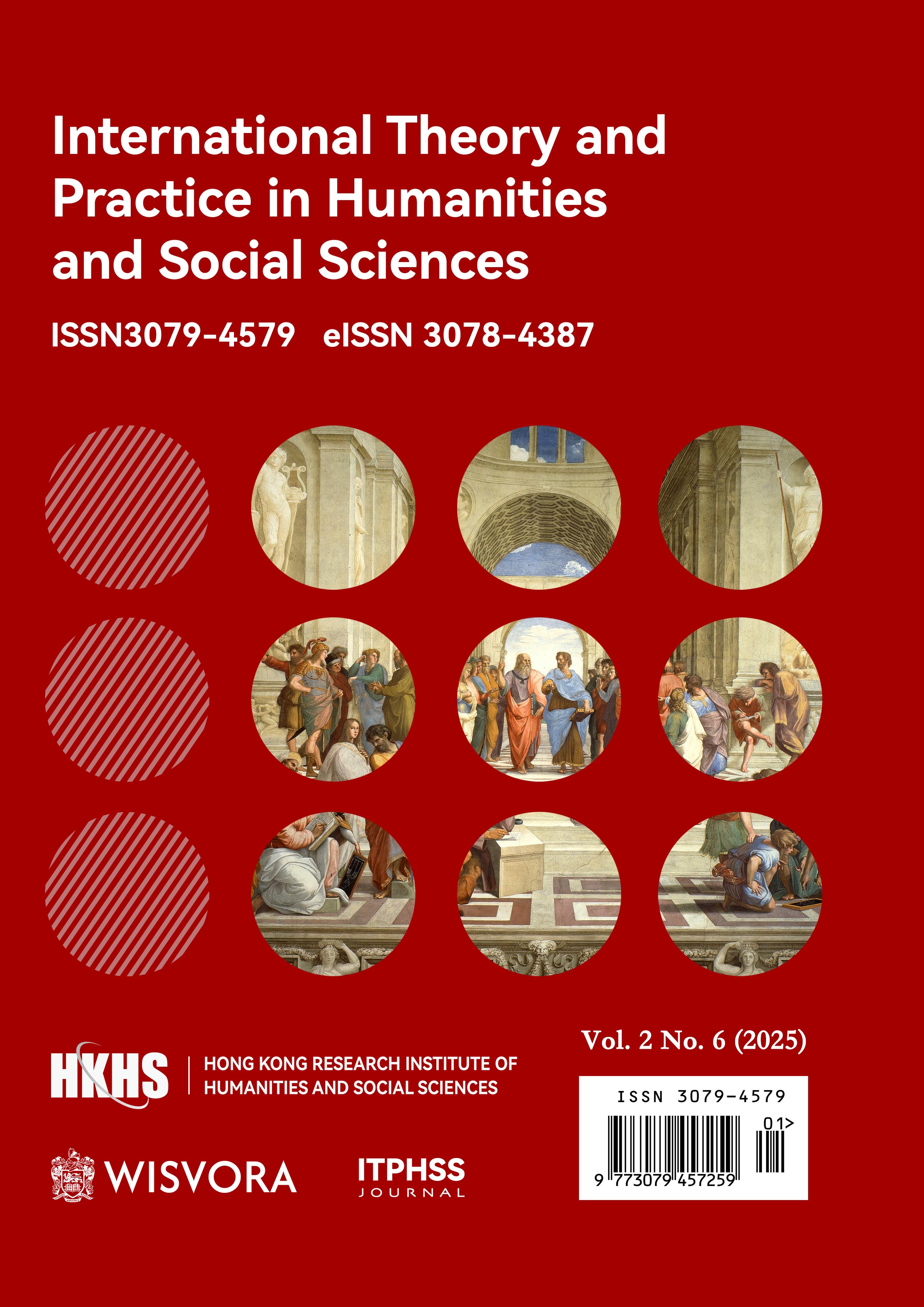Abstract
Metadiscursive nouns are essential resources in research articles. This study does the genre analysis by investigating the use of metadiscursive nouns in the academic articles written by different fields or disciplines, which is drawing on Jiang and Hyland’s metadiscursive nouns model (2017) and the help of Python. This research compares the distribution, frequency, and functional roles of metadiscursive nouns in the four disciplines’ research articles, which are Linguistics, Education, Chemistry, and Materials Engineering.. The results show that there existed difference in the use of metadiscurive nouns among the four disciplines. This research enriches the understanding of metadiscursive nouns in interdisciplinary academic articles and it provides insights into the writing proficiency of different disciplines and offers pedagogical implications for novice academic writers and educators to address the specific challenges faced by corresponding disciplines’ scholars in improving their academic writing skills.
References
Sun A Kim, & Zhaoqi Li. (2025). The Effect of Professional Identity on Customer Orientation among Chinese Estheticians: A Moderated Mediation Model. Research on Economics and TEST
Alanazi, M., & Alqarni, M. (2022). The very first sentence in research article introductions: A rhetoric comparative approach. Heliyon, 8(8), e10241. https://doi.org/10.1016/j.heliyon.2022.e10241
Benitez-Castro, M.-A. (2021). Shell-noun use in disciplinary student writing: A multifaceted analysis of problem and way in third-year undergraduate writing across three disciplines. English for Specific Purposes, 61, 132–149. https://doi.org/10.1016/j.esp.2020.10.004
Bruce, I. (2014). Expressing criticality in the literature review in research article introductions in applied linguistics and psychology. English for Specific Purposes, 36, 85–96. https://doi.org/10.1016/j.esp.2014.06.004
Deng, L., Cheng, Y., & Gao, X. (2024). Engagement patterns in research article introductions: A cross-disciplinary study. System, 120, 103204. https://doi.org/10.1016/j.system.2023.103204
Duque Gómez, Eladio. (2024). Factual Shell Noun Constructions in Discourse. Revista signos, 57(114), 311-336. http://dx.doi.org/10.4067/S0718-09342024000100311
Edsoulla, C. & Aaron, W. (2025). Examining the use of academic vocabulary in first-year ESL undergraduates’ writing: A corpus-driven study in Hong Kong. Assessing Writing, 63, 100913. https://doi.org/10.1016/j.asw.2024.100913
Farhang-Ju, M., Jalilifar, A., & Keshavarz, M. H. (2024). Specificity and generality of lexical bundles in the rhetorical moves of Applied Linguistics research article introductions. Journal of English for Academic Purposes, 69, 101387. https://doi.org/10.1016/j.jeap.2024.101387
Gao, S., & Pramoolsook, I. (2023). A cross-cultural move analysis of electronic engineering research article introductions: The case of Chinese, Thai, and native English scholarly writers. Ampersand, 10, 100106. https://doi.org/10.1016/j.amper.2022.100106
Gillaerts, P., & Van De Velde, F. (2010). Interactional metadiscourse in research article abstracts. Journal of English for Academic Purposes, 9(2), 128–139. https://doi.org/10.1016/j.jeap.2010.02.004
Gray, B., & Cortes, V. (2011). Perception vs. evidence: An analysis of this and these in academic prose. English for Specific Purposes, 30(1), 31–43. https://doi.org/10.1016/j.esp.2010.06.004
Huang, L., & DEng, JL. (2025). "This dissertation intricately explores...": ChatGPT's shell noun use in rephrasing dissertation abstracts. System ,129. https://doi.org/10.1016/j.system.2024.103578
Hyland, K. (2017). Metadiscourse: What is it and where is it going? Journal of Pragmatics, 113, 16–29. https://doi.org/10.1016/j.pragma.2017.03.007
Hyland, K. 2005. Metadiscourse: Exploring Interaction in Writing. New York: Continuum
Jiang, F. (Kevin), & Hyland, K. (2017). Metadiscursive nouns: Interaction and cohesion in abstract moves. English for Specific Purposes, 46, 1–14. https://doi.org/10.1016/j.esp.2016.11.001
Jiang, F., & Hyland, K. (2015). “The fact that”: Stance nouns in disciplinary writing. Discourse Studies, 17(5), 529–550. https://doi.org/10.1177/1461445615590719
Kashiha, H. (2022). Academic lectures versus political speeches: Metadiscourse functions affected by the role of the audience. Journal of Pragmatics, 190, 60–72.
Lu, X., Casal, J. E., Liu, Y., Kisselev, O., & Yoon, J. (2021). The relationship between syntactic complexity and rhetorical move-steps in research article introductions: Variation among four social science and engineering disciplines. Journal of English for Academic Purposes, 52, 101006. https://doi.org/10.1016/j.jeap.2021.101006
Maher, P., & Milligan, S. (2019). Teaching master thesis writing to engineers: Insights from corpus and genre analysis of introductions. English for Specific Purposes, 55, 40–55. https://doi.org/10.1016/j.esp.2019.05.001
Schmid, H. 2001. ‘Presupposition can be a bluff’: How abstract nouns can be used as presupposition triggers. Journal of Pragmatics,33(10): 1529-1552. https://doi.org/10.1016/S0378-2166(01)00027-3
Swales, J.M. (1990). Genre Analysis: English in Academic and Research Settings. Cambridge: Cambridge University Press
Thirakunkovit, S., Rodriguez-Fuentes, R. A., Park, K., & Staples, S. (2019). A corpus-based analysis of grammatical complexity as a measure of international teaching assistants’ oral English proficiency. English for Specific Purposes, 53, 74–89. https://doi.org/10.1016/j.esp.2018.09.002
Ahn, C.-Y., & Oh, S.-Y. (2024). Citation practices in applied linguistics: A comparative study of Korean master’s theses and research articles. Journal of English for Academic Purposes, 69, 101369. https://doi.org/10.1016/j.jeap.2024.101369
Yin, S., Fan, J., Jin, Y., & Stapleton, P. (2024). Towards a framework of critical thinking for assessing EAP speaking. Journal of English for Academic Purposes, 71, 101426. https://doi.org/10.1016/j.jeap.2024.101426
Ansarifar, A., Shahriari, H., Staples, S., & Ghazanfari, M. (2025). A multi-dimensional analysis of thesis abstracts: Variation across academic levels and L1 backgrounds. Journal of English for Academic Purposes, 73, 101465. https://doi.org/10.1016/j.jeap.2024.101465
Li, L., Franken, M., & Wu, S. (2020). Bundle-driven move analysis: Sentence initial lexical bundles in PhD abstracts. English for Specific Purposes, 60, 85–97. https://doi.org/10.1016/j.esp.2020.04.006
Ebrahimi, S. F., & Chan, S. H. (2015). Research Article Abstracts in Applied Linguistics and Economics: Functional Analysis of the Grammatical Subject. Australian Journal of Linguistics, 35(4), 381–397. https://doi.org/10.1080/07268602.2015.1070660
Xu, J., & Li, J. (2021). A syntactic complexity analysis of translational English across genres. Across Languages and Cultures, 22(2), 214–232. https://doi.org/10.1556/084.2021.00015
Chen, S., Xu, J., & Feng, X. (2024). Sub-disciplinary variation of metadiscursive verb patterns in English research articles: A functional analysis of medical discourse. Iral-International Review of Applied Linguistics in Language Teaching, 62(1), 165–195. https://doi.org/10.1515/iral-2022-0232

This work is licensed under a Creative Commons Attribution 4.0 International License.
Copyright (c) 2025 Rui Sun (Author)

